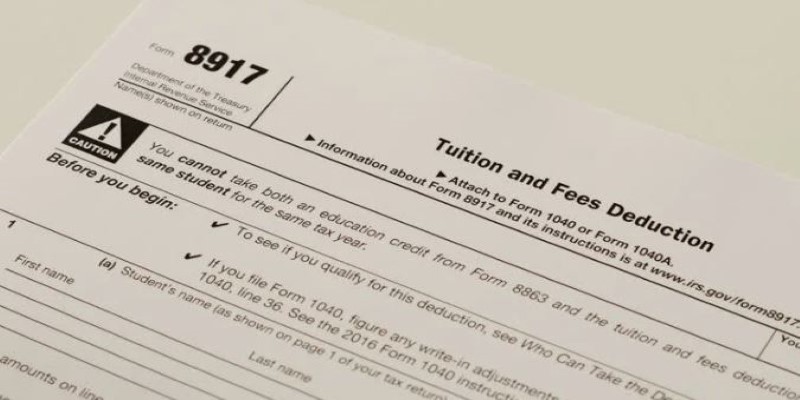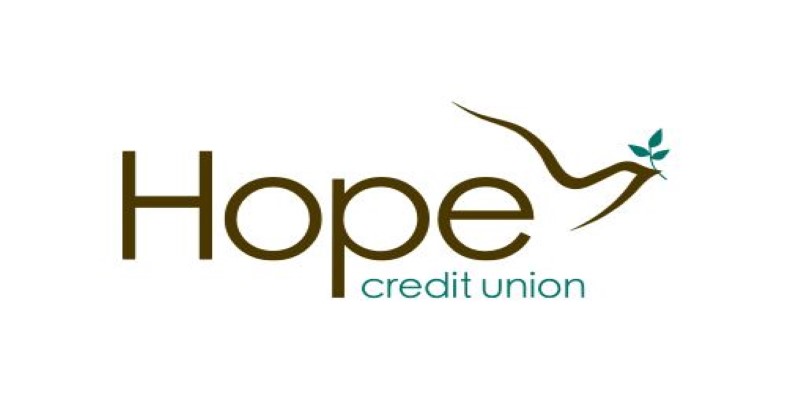Tuition and Fees Deduction: A Step-by-Step Guide to Using Form 8917
Dec 13, 2024 By Susan Kelly
Paying for education can be costly, but the IRS offers Form 8917, the Tuition and Fees Deduction, which can help reduce the financial strain. Whether you're a student or paying for someones education, this deduction allows you to lower your taxable income by claiming qualified education expenses. However, understanding how it works and whether you qualify can be confusing.

This article guides you on everything you need to know about Form 8917. From being eligible for it, deductible expenses, and the specific guidelines on which to file for it, you will understand how this tax-saving opportunity could be applied at the end of the article to trim tax burdens.
What is Form 8917 and How Does It Work?
Form 8917, officially titled Tuition and Fees Deduction, allows taxpayers to deduct certain educational expenses from their taxable income, lowering the amount of tax they owe. This deduction was created to help reduce the financial burden of higher education costs and make college more affordable. Its especially beneficial for those who do not itemize deductions on their tax return but still have qualifying education expenses.
This is through Form 8917- directly reducing taxable income, which is a less complicated substitute for education credits like the American Opportunity or Lifetime Learning Credits. Such a deduction will help reduce your tax bill and does not have the overwhelming requirements surrounding other education benefits. The creditable amount you can claim is $4,000 for qualified tuition and fees, although the actual deduction depends on your income level and filing status. However, not everyone qualifies because income limits apply, and enrollment status, such as full- or half-time enrollment, can also affect whether you qualify for and the amount of this deduction.
Who is Eligible for the Tuition and Fees Deduction?
To qualify for the Tuition and Fees Deduction, both the taxpayer and the educational expenses must meet specific criteria outlined by the IRS. Here are the general eligibility rules:
Eligible Students:

The deduction is available to students enrolled in a qualified educational institution, usually colleges, universities, and even vocational schools accredited by the U.S. Department of Education. A student need not be working toward a degree; he or she simply must be registered for at least one course for academic credit.
Qualified Expenses:
You can only deduct qualified expenses, which generally include tuition and fees required for enrollment or attendance. However, this does not include costs for room and board, insurance, transportation, or personal expenses. The deductible amount is limited to the tuition and mandatory fees associated with the education.
Income Limits:
The amount you can deduct on Form 8917 is gradually reduced based on your income. For single filers with a modified adjusted gross income (MAGI) of more than $80,000 and joint filers with a MAGI of more than $160,000, the deduction is phased out completely. It's important to check your income level and ensure that you qualify for the maximum deduction.
Filing Status:
The deduction is available for taxpayers who file their taxes as either single, married, filing jointly, or head of household. However, those who file as married filing separately are not eligible to claim this deduction.
No Double Dipping:
Suppose you or someone else has claimed the same expenses for a different educational tax benefit, such as the American Opportunity Credit or Lifetime Learning Credit. In that case, you cannot also claim these expenses on Form 8917. You must choose one deduction or credit for any given tax year.
How do you claim the tuition and fees deduction?
Filing for the Tuition and Fees Deduction using Form 8917 is fairly straightforward, but you must follow some key steps to ensure you're correctly claiming it.
Complete the Form: To claim the deduction, fill out IRS Form 8917, providing details about the taxpayer, student, and educational institution. List the qualified tuition and fees you paid during the tax year to calculate your potential deduction.
Determine Your Deduction: The form helps calculate your deduction based on your income and filing status. You can deduct up to $4,000 in qualified tuition and fees, with the exact amount depending on your eligibility and financial situation.
File with Your Tax Return: Attach Form 8917 to your tax return when filing. If using tax software, it will prompt you to complete the form. Ensure it's included with your 1040 or 1040-SR.

Keep Records: Maintain records of your education-related expenses, including receipts and 1098-T forms. The IRS may request these documents if you are audited, so it's important to have accurate records for verification.
Maximize Your Benefits: Ensure youre aware of other tax benefits, like the American Opportunity Credit or Lifetime Learning Credit. You can only claim one benefit per student per year, so choose the one offering the best savings for your situation.
Key Considerations and Limitations
While the Tuition and Fees Deduction can be a valuable tax benefit, several important limitations must be considered.
Income Phaseout: The deduction phases out for higher-income taxpayers, meaning those with incomes above certain thresholds may lose eligibility or receive a reduced deduction.
No Dependency for the Student: You must claim the deduction for a student listed as your dependent on your tax return. Independent students are ineligible.
Non-Degree Programs: You can claim the deduction for non-degree programs, like certificate courses or vocational training, as long as the student is enrolled in at least one course.
Changes in Tax Law: Tax laws frequently change, so stay updated on any adjustments to Form 8917 or other education-related deductions that might impact your eligibility.
Conclusion
Form 8917 provides a straightforward way to reduce your taxable income by deducting qualified education expenses. To maximize your savings, ensure you meet eligibility requirements, know what expenses qualify, and complete the form accurately. Be mindful of income limits and phaseouts, and keep detailed records of your education-related costs. By following these steps, you can effectively reduce your tax burden and ease the financial strain of higher education, making the most of the Tuition and Fees Deduction.

5 Ways to Improve Your Finance Health

Mobile Device Money Transfer Services Online

How the Hope Credit Helped Students and What Took Its Place

iBusiness Funding (Funding Circle) Review

Learn: What is Delivered Duty Unpaid (DDU)?

Complete Money Makeover: How to Do a Financial Facelift

What are the Tax base: Meaning, Calculations, and Everyday Relevance

Difference Between ATM, Debit, And Credit Card

Maximize Your Savings with the Energy Tax Credit: How It Works and Its Benefits

How to Get a New Dog on a Budget

Strategies to achieve financial fitness
